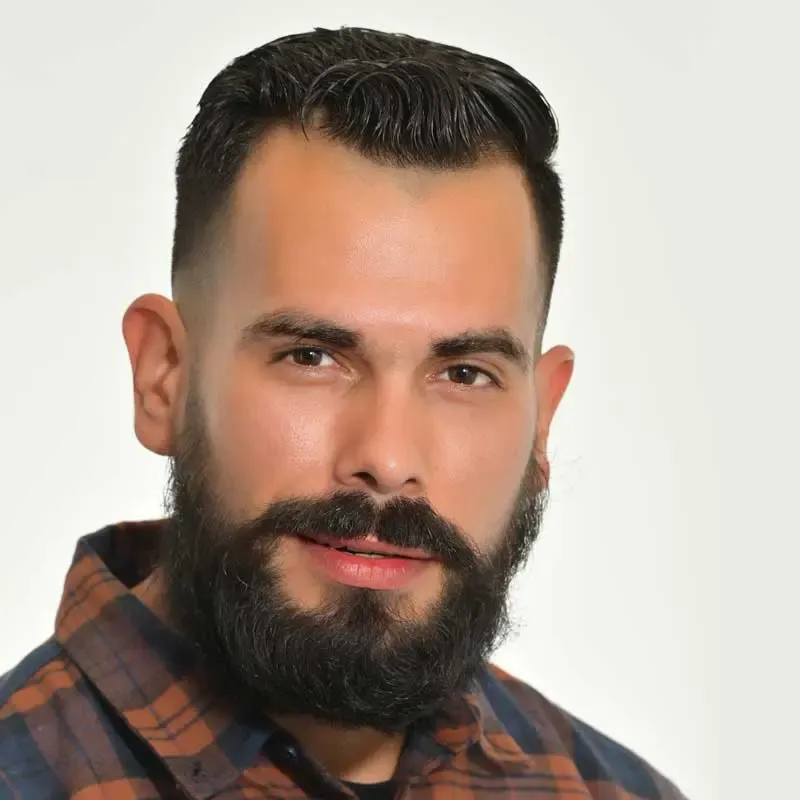



Do you feel younger than you look? Not quite ready for a facelift? If you want a rejuvenated look without the cost or downtime of a traditional facelift, the RT Mini Facelift in Houston with facial plastic surgeon Dr. Raghu Athré is for you.
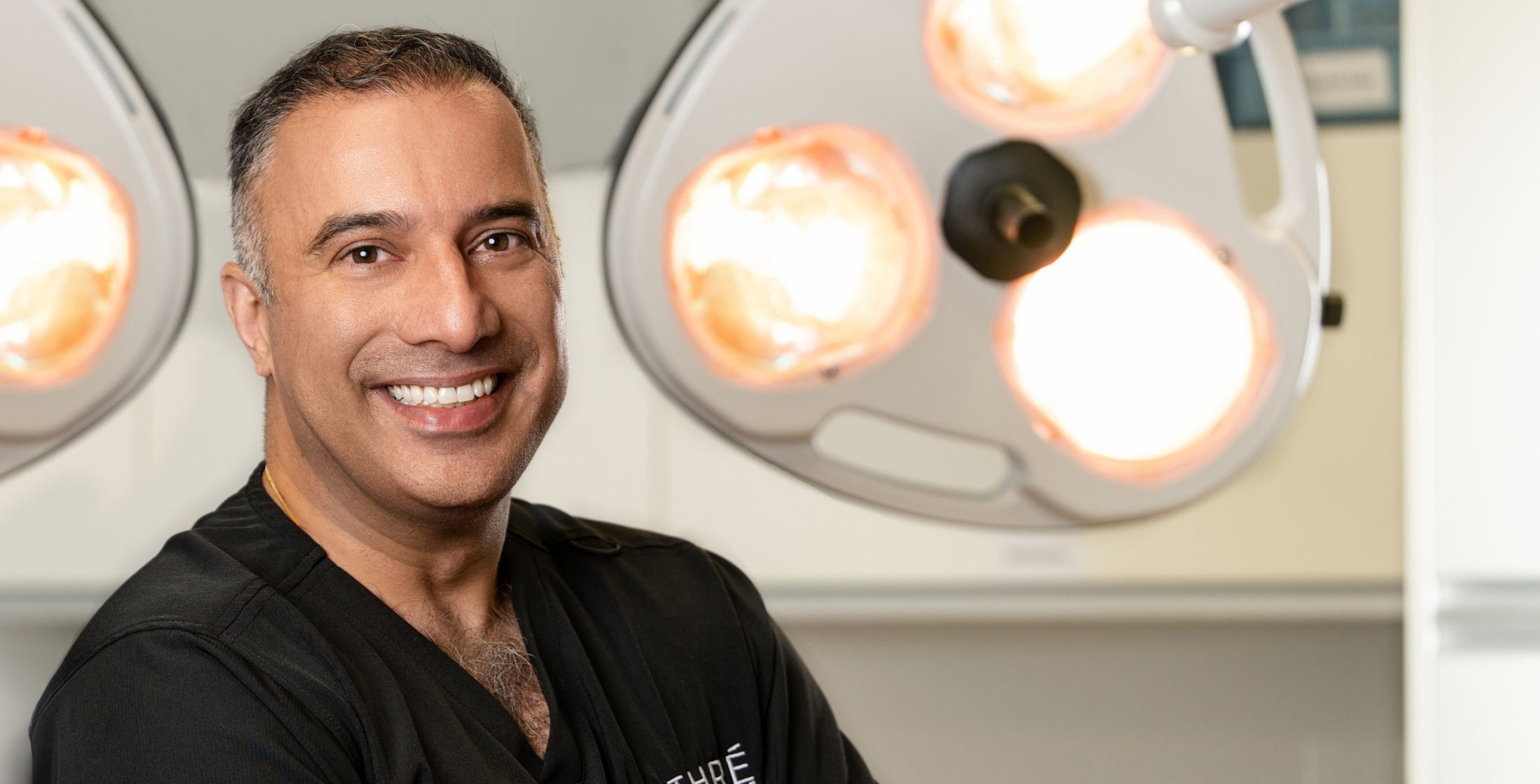
“I kept seeing patients who have mild aging changes in their face. Today’s patients are more active and need a procedure that is tailored to their lifestyle. The RT Mini Facelift was designed with those patients in mind.”– Dr. Athré
The RT Mini Facelift is a novel surgical procedure designed by Houston facial plastic surgeon Dr. Raghu Athré. The RT Mini Facelift was specifically designed with younger patients in mind who want a freshened appearance, but might not be able to afford the downtime associated with a traditional facelift procedure.
Dr. Athré not only designed and perfected this procedure, he believes in it. The RT Mini Facelift combines the best of several facelift surgical techniques to give the patient the benefits associated with a traditional facelift, look years younger, but with a reduced downtime and recovery period and decreased cost.
Though age is not an absolute criterion, the average RT Mini Facelift patient is generally in their late 30’s up to their early fifties. Those who want to avoid the typical downtime and recovery period of a traditional facelift are excellent candidates for the RT Mini Facelift.
A RT Mini Facelift is a type of Mini facelift. It is a surgical procedure designed to rejuvenate the face. The primary areas addressed by a RT Mini Lift are:
These are the same 3 areas addressed with a traditional deep plane facelift as well. The RT is designed for less dissection and elevation of tissues. It was designed with a patient that has less aging in these areas in mind.

The perfect candidate for a mini Facelift is:

As we age, tissues of the face tend to fall. The critical areas that tissues fall are:
Each patient ages differently. Some patients age with significant aging in all of the above 3 areas. Some patients age with minimal aging in the above three areas. Those patients are perfect candidates for our Houston RT Mini Lift.
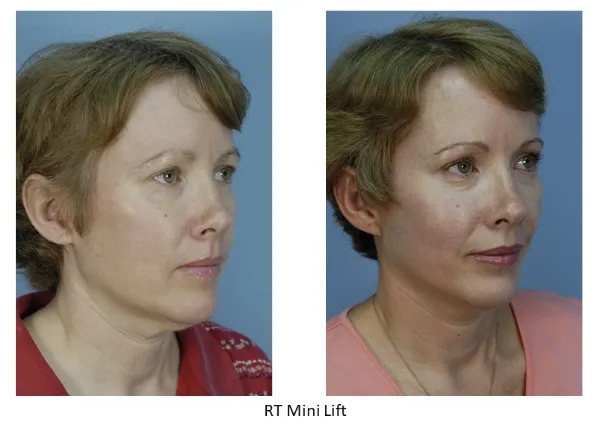
The above photograph perfectly describes a RT Mini Lift candidate and shows a RT Mini Facelift patient before and after. The patient has mild aging in the midface, jawline and neck. She does not have a very heavy neck, otherwise she might need a lower facelift or neck lift modification to the RT Mini Facelift. And, her results are stunning.
The first thing all patients ask is, “How much does a mini facelift cost”? The RT Mini Facelift costs less than a Deep Plane Facelift, and the cost of both procedures can be found on our pricing page. The cost of a mini facelift vs. full facelift is lower due to the fact less dissection is required, and therefore, less time is required. The costs presented above are rough estimates and are comparable against the cost of a facelift in Houston, and a mini facelift in Houston.
This diagram shows the difference in extent of dissection between a deep plane facelift (green) and a RT Mini Facelift (red). The difference in extent of dissection, associated time with less dissection translates to less cost. For the patient, this also means lower bruising, lower swelling, and a faster recovery period.
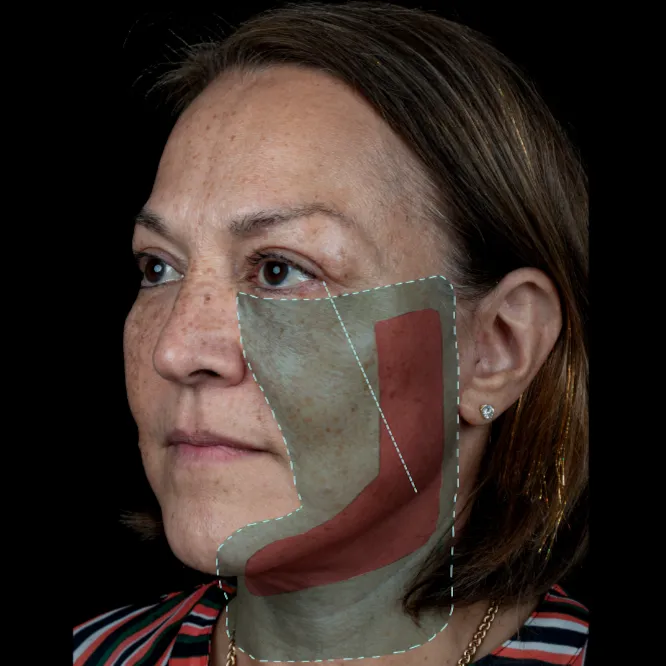

The cost of a RT Mini Facelift is approximately the same as the cost of a lower face lift or cost of a neck lift. The main difference between these types of cosmetic procedures is the targeted area.
The RT Mini Facelift targets Midface, jawline, and neck. The lower facelift or a neck lift really only targets the neck with mild improvement along the jawline.

Difference in dissection area between RT Mini Face lift and Neck Lift
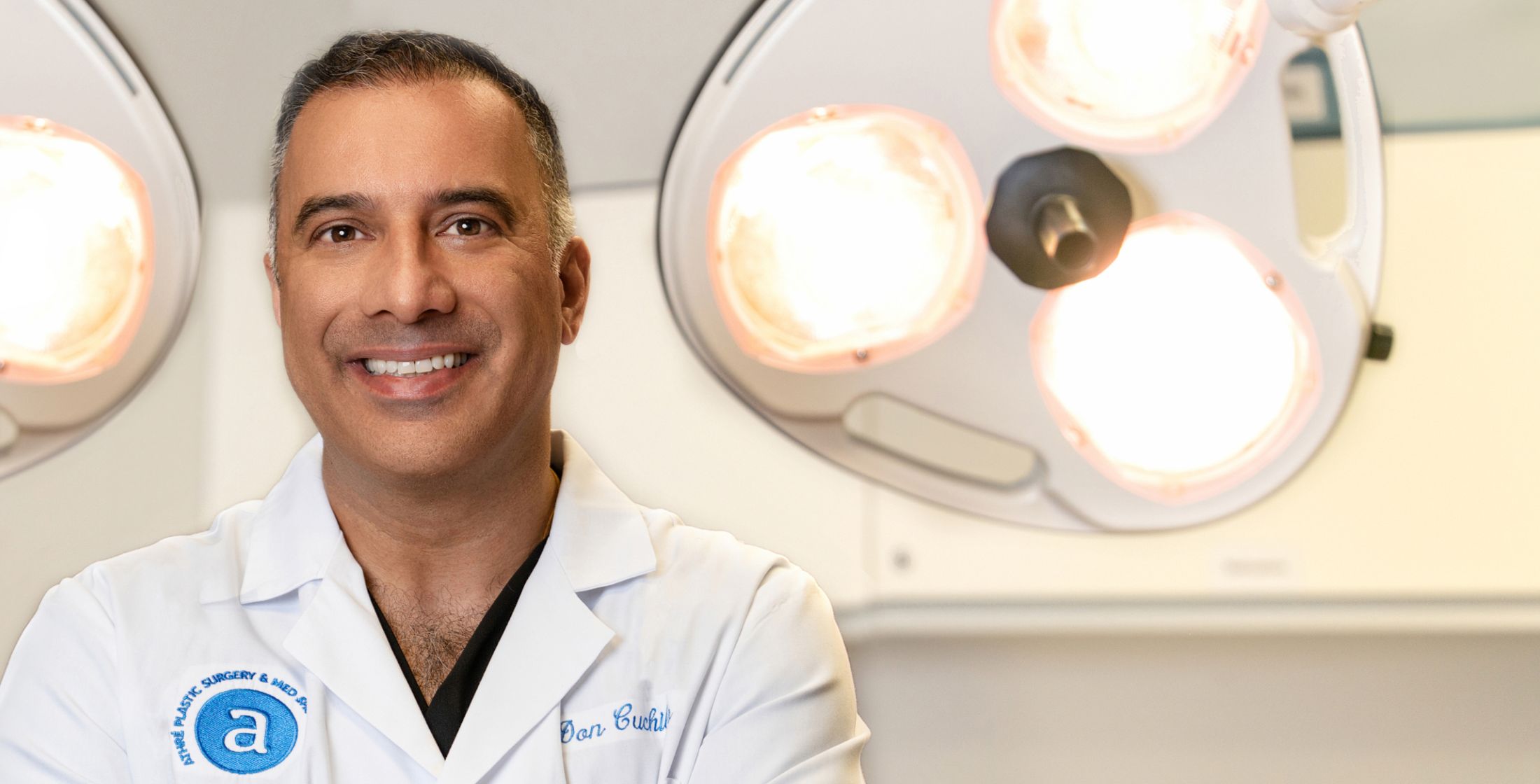
Patients in the Houston area have numerous options when searching for a facelift surgeon or a mini facelift surgeon near them. Almost every plastic surgeon and even some nonsurgeons offer a facial rejuvenation option and a minimally invasive surgical procedure to rejuvenate the face and the public is bombarded with terms such as Lunchtime Lift™, Rapid Lift™, Band Aid Lift™, and Pony Tail Lift.
The differences between Dr. Athre and the other competitors in the field are clear. First, Dr. Athre only offers procedures that withstand the test of time. These procedures attempt to reverse the signs of aging by just tightening the skin laxity, or by using barbed sutures in the face, or by trying to suspend the face with permanent sutures. The results in these procedures are short-lived because these procedures do not address the superficial musculoaponeurotic system (SMAS) like a traditional facelift. In order for facelift results to be long-lived, have a natural looking result, and results not look “pulled”, the muscle layers of the face and neck (the SMAS and the platysma) have to be addressed. Lesser lifts, including thread lifts, just do not have the long term results that a RT Mini Facelift or other facelift techniques used by Dr. Athré have. For more on thread lifts, check out: About Thread Lifts
An RT Mini Face Lift is an SMAS lift. The RT Mini lift addresses the SMAS muscle layer. Therefore, this mini facelift will have long term results of 10 years or greater. Another important factor in getting great results, happy patients, and results that are long term is patient selection. Patients with more significant aging will not be served well with a mini facelift despite the fact that the cost of a mini face lift is less. Dr. Athre has the experience and surgical skills to provide the simplest type of facelift all the way to the most complicated facelift. Therefore, patients are given treatment recommendations based on their anatomy and type of aging.
Sometimes, modifications to a mini face lift can be made to enhance dissection for a specific anatomic concern. An example of this would be a patient who has all the anatomy of a mini face lift, but has a little too much tissue in the neck region. This type of patient could undergo an enhanced RT Mini Lift where the dissection is increased to accommodate her anatomy. This type of customization rather than a one size fits all model makes Dr. Athre unique.
When patients are selected appropriately, the results are maximized, side effects are minimized, and results are long term.

In general, the technique used for the RT Mini Facelift is the same as in a facelift. The small incision is hidden in the hair above the ear and camouflaged in the ear canal, and then gently wraps around the ear lobe and then disappears in the crease behind the ear. The only difference between a traditional facelift process and the RT Mini Facelift is that the RT Mini Facelift addresses a smaller area of concern. The RT Mini Facelift is excellent in those patients that have mild aging in the midface, mild aging along the jawline, and mild aging in the neck.
Patients with significant aging and a very heavy neck may be better served by a traditional deep plane facelift for optimal results.
With the RT Mini Face lift Houston patients can have it performed under local anesthesia or general anesthesia. Most commonly, this type of cosmetic surgery is performed under local anesthesia. Please see Anesthesia for Facial Procedures for information about anesthesia for facial procedures.
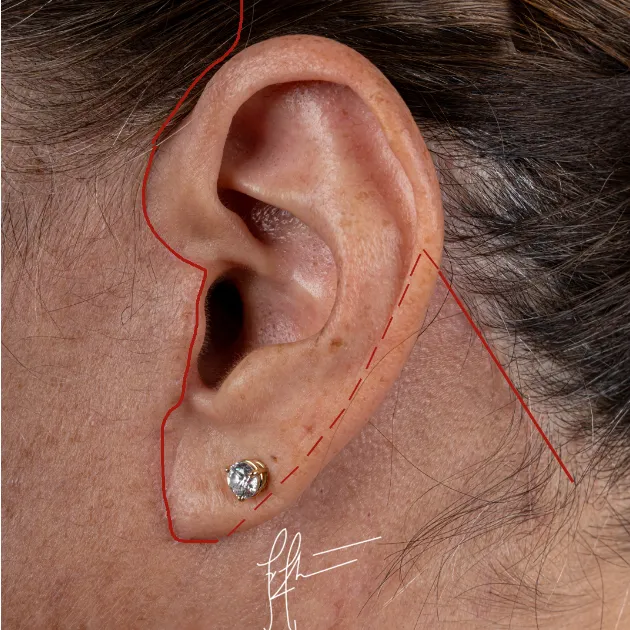
Example of facelift incision
RT Mini Facelift patients have their procedure done on an outpatient basis. Because incisions are smaller, bruising and swelling are drastically reduced. Dr. Athre also uses some special techniques to minimize the bruising, swelling, and recovery time for patients.
Most patients are on their feet the very next day and return to work within 5-7 days. The RT Lift tightens, repositions, and re-drapes the SMAS just like a traditional facelift, thereby giving the patient a fresh new look that lasts.

The RT Mini Facelift addresses the midface, jawline, and neck. Frequently, patients add ancillary procedures to address aging in other parts of the face. Commonly added procedures are:
The cost of RT Mini Facelift can be found on our pricing page, and prices vary depending on anatomy and anesthesia type.
An RT Mini Facelift requires less downtime and is less invasive than a deep plane surgical facelift. This difference is only because the extent of dissection is less than a deep plane facelift. Candidates may show early signs of aging and do not require as dramatic of a procedure as a traditional deep plane facelift. If patients are selected properly, the longevity of both procedures is relatively the same.
Patients in their late 30’s and early 40’s may be best positioned to get the most out of a mini facelift. The age of the patient is not the primary determining factor, but the above age group is a good approximation. Better variables for selecting good candidates include: overall good medical health, minimal overall aging, no significant redundancy in the neck.
The recovery period for an RT Mini Facelift is shorter than a regular facelift procedure at only a few days. Most patients can return back to work in about 5-6 days.
Like most facial surgery, a RT Mini Facelift is not painful. The vast majority (>95%) of RT Mini Facelift will use less than 2-3 pain pills total in their postoperative period. Most patients will take 1 pill on the night of surgery to help with the discomfort associated with the dressings. On postoperative day #1, the dressings are removed and the discomfort is greatly reduced. After this point, most patients take Tylenol over the counter for 3-4 days.
“I had seen & had other work done by older plastic surgeons that used ‘old school’ techniques. I elected to have Dr. Athre do a mini face lift & upper eye lift. It literally took 10 plus years off my face. He uses new age techniques & he is absolutely amazing and does incredible work. I won’t let another plastic surgeon do any facial work on me except him. He also has a wonderful personality and makes you feel very well taken care of.”
